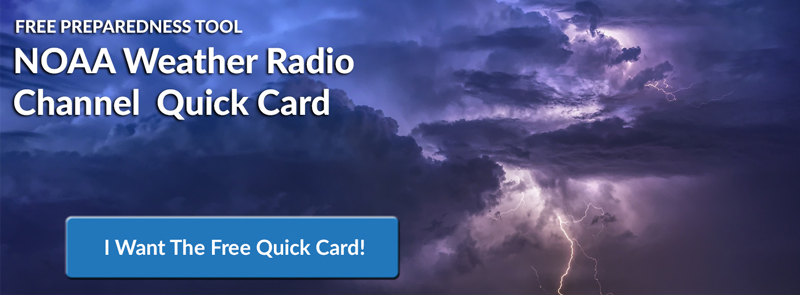How To: Tune NOAA Weather Radio on a VHF/UHF Transceiver
NOAA Weather Radio allows for access to important weather information across the country 24 hours a day. The ability to tune in and monitor this information can be vital during emergency situations or outdoor ventures. Learn how to tune NOAA Weather Radio frequencies on your amateur radio and don’t be dependent on a special radio or programmed memory channel.
What Is NOAA Weather Radio?
NOAA Weather Radio All Hazards (NWR) is a nationwide network of radio stations broadcasting continuous weather information directly from the nearest local National Weather Service office. The stations transmit vital weather information such as local forecasts, watches, and warnings all day, everyday.
The National Weather Service offices also integrate into the EAS system (Federal Emergency Alert System) and local authorities so other types of information such as Amber Alerts or Civil Emergency messages also get transmitted across the weather radio system.
Most have heard of the Weather Alert Radios that sound an alarm for a tornado warning or severe weather alert for your area. This is the network those radios monitor to trigger the audible alert.
that sound an alarm for a tornado warning or severe weather alert for your area. This is the network those radios monitor to trigger the audible alert.
Bottom line, when the power is out or cell phones don’t work, NOAA weather radio (just like ham radio) can still get the emergency message through. Get information on severe weather warnings, tornado warnings, evacuations in your area and more.
Dedicated Radio Not Required
While a dedicated radio can bring you a visual or audible siren alarm in the middle of the night due to a weather alert, that type of radio is not required to monitor the NOAA Weather Radio signal. In fact, it is only half the value. The rest of the value in the system is that you can tune in any time during the day and get current weather information within a couple minutes.
It’s like the Weather Channel, but without cable. And can be accessed on just about any radio that can receive in the 160 MHz spectrum.
Benefits to Tuning In vs Programming a Channel
There are a number of benefits to tuning in the NOAA Weather Radio signal versus programming it into a channel. Here are a few of the main ones that come to mind.
Save Memory Channels
Many chinese radios such as the Baofeng UV-5R or older model amateur radios have a limited number of channels. Save these channels for programming repeaters or other simplex frequencies with dedicated tones, offsets, or other settings. No reason to waste a memory on a receive only frequency that doesn’t change.
Don’t Mess with your Scan
Since the NOAA Weather Radio signal is transmitted on at all times and non stop, if programmed in to your memory incorrectly, it can cause your scan function to become inoperable in the field.
For more detail on these benefits, please check out your YouTube video on the topic included below.
How to Tune to NOAA Weather Radio
In our video included below, we walk you though how to tune in to the NOAA frequencies using three of the most popular amateur radios on the market, the BaoFeng UV-5R, the Yaesu FT-60, and the Wouxun UV6D. We take you through everything you need to receive the channels with the best signal possible.
Free NOAA Weather Radio Channel Quick Guide
Worried you will forget the NOAA Weather Channels? Download our free quick reference card. It is formatted to print on Avery Business Card stock for quick tear out and compact storage (uses Avery Template 8371). Or simply print on your favorite card stock and cut out with scissors.

Like This Article?
If this article was useful for you, checkout our related articles on the 4 T’s of Emergency Communications Planning and Why Every Prepper Should Have a GMRS License.

Love the help thanks
thank you for the information
Very good info. very handy. Thanks !!
Thanks..
In southeast Connecticut at this time.
Hurricane expected this weekend.
Staying in a motel while working in this area and getting prepared .
I’m wondering to owned a baofeng radio to listen to the weather or listen to any emergency broadcast do you need a license for it?
@Luis Martinz,
A year late, but you only need a license to transmit, not receive. Anyone can use any radio, licensed or not, to listen in.